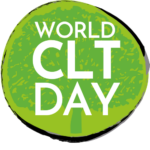United States
Manuals and Guides from the United States
Written by John Emmeus Davis in 2007, Starting a Community Land Trust: Organizational and Operational Choices, is a manual that seldom says what the “right” decision should be. Starting a community land trust is not a process of lifting a box of pre-measured ingredients off the kitchen shelf and following a predetermined recipe guaranteed to produce the same cookie-cutter product every time. Different communities – large or small, urban or rural, prosperous or poor – have different conditions, priorities, politics, and needs. The right process and the right decisions for starting a CLT in one community may not be right for another. But the list of decisions is mostly the same. To support and to spur such decision-making, this manual points out those choices that matter the most in the early days of planning a CLT. It presents the range of options for making each decision and reviews the pros and cons that should be weighed in selecting one course of action over another. Starting a CLT starts with basic questions of why, where, when, and who. The how comes later.
The National CLT Network (now Grounded Solutions Network) published this 482 page manual (edited by Kirby White) in 2011. This remains the most current edition of the CLT Technical Manual, replacing the predecessor Legal Manual published by the Institute for Community Economics. The manual provides a comprehensive, practical guide for the ongoing operation of CLTs, as well as for future CLT start-ups. And it contains the model CLT ground lease, which has been utilized by CLTs around the US (and around the world).
You can find links to individual chapters on the Grounded Solutions Network website.
By Lauren Lowery, Matt Weber, Jenee Gaynor, Natasha Leonard, Tina Lee, and Alexis Butler. National League of Cities and Grounded Solutions Network.
This report provides an introduction to the community land trust model by shedding light on their operation and the benefits they can bring to both residents and cities. It goes on to highlight key ways that municipal governments and local leaders can initiate or support CLTs in their communities, and offers practical examples of community land trusts in action.
By Peter Sabonis and Zachary Murray, Partners for Dignity and Rights, Spring 2021
This report examines a number of CLTs that have negotiated these stages successfully to reach extremely low-income levels, and provides specific “case study” information on each. Like any ELI housing, these CLTs have utilized government subsidies at one or all three stages of development. In a time where federal help at each stage is becoming scarcer, these CLTs also have been activists in creating new state and local policies and resources to reach deeper levels of affordability.
By Kim Graziani, Center for Community Progress
The purpose of this publication is to: 1) provide basic education on land banks and CLTs; 2) present emerging and promising models and examples of land bank and CLT partnerships from across the country; and 3) make a case for what is needed to evolve and expand this work, particularly given the imperative to address historical and growing disparities in Black communities while taking advantage of key funding opportunities.

